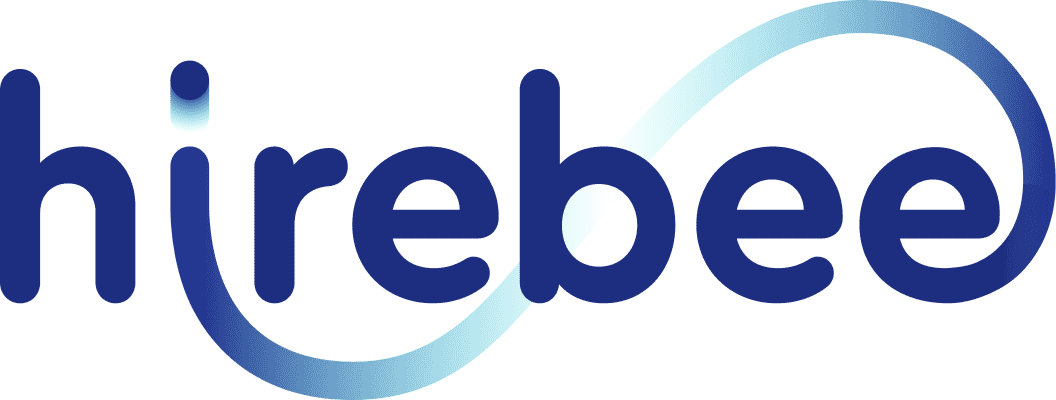Team culture plays a crucial role in the success and productivity of any workplace. It encompasses the shared values, beliefs, attitudes, and behaviors that shape how individuals within a team interact and work together towards common goals. A positive team culture promotes collaboration, communication, trust, and innovation, leading to improved performance and employee satisfaction.
However, maintaining a healthy team culture is not without its challenges. In today’s dynamic and diverse workplaces, teams often encounter various obstacles that can hinder the development and sustenance of a positive team culture. These challenges can arise from communication issues, conflict and personality clashes, diversity and inclusion concerns, remote work arrangements, organizational structure, burnout, lack of professional development opportunities, turnover, and more.

Communication issues can arise due to ineffective channels or barriers such as language differences, impeding clear understanding and collaboration. Conflicts and personality clashes can hinder team cohesion and derail progress if not addressed constructively. Diversity and inclusion challenges can lead to biases, inequity, and exclusion, creating a fragmented team culture. Remote work and virtual teams bring their own unique set of challenges, such as isolation, communication difficulties, and trust-building in the absence of physical presence. Organizational structure and leadership styles can impact team culture, either stifling collaboration or fostering a supportive environment. Burnout and stress can significantly affect team morale and productivity, while a lack of professional development opportunities can hinder growth and engagement. High turnover rates can disrupt team dynamics and require constant integration of new members.
Addressing these team culture challenges is crucial for organizations to foster a positive and thriving work environment. By implementing strategies to overcome these obstacles, organizations can create a culture that promotes effective communication, embraces diversity and inclusion, supports remote and virtual teams, fosters strong leadership, addresses burnout, offers professional growth opportunities, and ensures team cohesion through periods of change.
Hirebee makes finding the best candidates for your specific team a lot easier with the help of improved candidate screening and candidate sourcing features.
In this article, we will explore these team culture challenges in detail and provide strategies for overcoming them. By understanding and proactively addressing these challenges, organizations can cultivate a resilient and inclusive team culture that drives success and empowers their workforce.
Table of Contents
ToggleCommunication Issues
Effective communication is crucial for maintaining a healthy team culture in the workplace. However, there are several challenges that teams commonly face when it comes to communication, which can hinder collaboration and productivity.
Lack of effective communication channels
One of the primary challenges is the absence or inadequate use of appropriate communication channels within the team. This can lead to delays, misunderstandings, and information gaps. Teams should establish clear communication protocols and utilize tools such as email, instant messaging, project management software, and video conferencing platforms to facilitate effective communication.

Misinterpretation and misunderstanding of messages
Poorly conveyed messages or misinterpretations can create confusion and frustration among team members. Differences in communication styles, cultural backgrounds, and language barriers can contribute to misunderstandings. To mitigate this challenge, teams should practice active listening, ask clarifying questions, and encourage open dialogue to ensure that messages are accurately understood.
Language barriers in multicultural teams
In diverse teams where team members have different native languages or English proficiency levels, language barriers can hinder effective communication. It is essential to promote a culture of inclusivity and provide language support when necessary, such as translation services or language training, to bridge these communication gaps and ensure everyone can contribute and understand one another.
Reluctance to provide feedback or express concerns
In some team cultures, there may be a reluctance to provide feedback or express concerns openly. This can hinder the team’s growth and improvement. It is crucial to foster a safe and supportive environment where team members feel comfortable sharing their thoughts, ideas, and concerns. Encouraging regular feedback sessions, conducting anonymous surveys, and implementing a feedback culture can help overcome this challenge.
To address communication issues, teams should prioritize establishing clear communication channels, promoting active listening and understanding, fostering inclusivity, and creating a feedback-friendly environment. By addressing these challenges, teams can enhance collaboration, reduce misunderstandings, and build stronger relationships among team members.
Conflict and Personality Clashes
In any team or workplace, conflicts and personality clashes can arise due to various factors. These challenges can significantly impact team culture and hinder productivity if not properly addressed. It is crucial for organizations to recognize and address these issues to maintain a healthy and cohesive team environment. The following points highlight some common challenges related to conflict and personality clashes:
Differences in work styles and approaches
Team members may have diverse backgrounds, experiences, and work styles, which can lead to clashes when collaborating on projects. Some individuals may prefer a structured and organized approach, while others may thrive in a more flexible and creative environment. These differences can create tension and hinder effective teamwork.
Conflicting goals and priorities
When team members have different goals and priorities, it can lead to conflicts and a lack of alignment. Miscommunication and misunderstanding regarding project objectives can further exacerbate the situation. It is essential to establish clear goals and ensure that everyone is on the same page to minimize conflicts.
Personality clashes and interpersonal conflicts
Personalities and individual characteristics play a significant role in team dynamics. Conflicts can arise due to differences in communication styles, values, beliefs, or personal preferences. These clashes may result in strained relationships, reduced collaboration, and a toxic work environment.
Difficulty in resolving disagreements constructively
Disagreements are natural within a team, but the inability to address and resolve them constructively can harm team culture. If conflicts are not managed properly, they can escalate and lead to resentment, reduced motivation, and a breakdown in communication. It is important to establish effective conflict resolution mechanisms and promote open dialogue to find mutually beneficial solutions.
Diversity and Inclusion
Unconscious bias and stereotyping
Diversity and inclusion challenges in team culture often stem from unconscious bias and stereotyping. Unconscious bias refers to the automatic, subconscious judgments and assumptions we make about others based on their gender, race, age, or other characteristics. These biases can lead to unfair treatment, limited opportunities, and exclusion within the team. Stereotyping, on the other hand, involves generalizing certain characteristics or behaviors to a particular group, which can perpetuate harmful stereotypes and hinder collaboration.
Inequitable distribution of opportunities and recognition
Another significant challenge in team culture is the inequitable distribution of opportunities and recognition among team members. This can occur when certain individuals are consistently favored or given preferential treatment, while others are overlooked or undervalued. Such disparities can erode trust, breed resentment, and create a sense of exclusion within the team.
Lack of representation and inclusivity in decision-making
When team members from diverse backgrounds are not adequately represented in decision-making processes, it can result in a lack of inclusivity and hinder the team’s ability to consider different perspectives and approaches. When certain voices are consistently excluded, it not only stifles innovation but also creates a perception of inequality and marginalization within the team.

Difficulties in accommodating diverse perspectives and needs
Teams consisting of individuals with diverse backgrounds, experiences, and perspectives bring valuable insights and creativity. However, accommodating and integrating these diverse perspectives can present challenges. Differences in communication styles, cultural norms, and problem-solving approaches can lead to misunderstandings and conflicts. Failing to create an inclusive environment that values and appreciates diverse viewpoints can hinder collaboration and limit the team’s potential.
Remote Work and Virtual Teams
Isolation and lack of social interaction
- Remote work can lead to feelings of isolation and loneliness.
- Lack of face-to-face interaction reduces informal communication and relationship-building.
- Social isolation can impact team morale and productivity.
- Strategies like virtual coffee breaks or team-building activities can help combat isolation.
Communication challenges in virtual settings:
- Remote teams may face difficulties in conveying tone and nonverbal cues.
- Technical issues can hinder effective communication (e.g., poor audio or video quality).
- Multiple communication platforms can lead to fragmentation and miscommunication.
- Establishing clear communication guidelines and selecting suitable tools can mitigate these challenges.
Time zone differences affecting collaboration:
- Global teams may have members spread across different time zones.
- Scheduling meetings and finding overlapping work hours can be challenging.
- Time zone differences can lead to delayed responses and hinder real-time collaboration.
- Flexibility in work hours and finding common meeting slots can help overcome these challenges.
Establishing trust and team cohesion without physical presence:
- Building trust and rapport can be harder in virtual teams.
- Lack of physical presence can make it difficult to gauge team members’ reliability and commitment.
- Team cohesion and camaraderie may be affected without in-person interactions.
- Regular virtual meetings, team-building exercises, and fostering open communication can foster trust and cohesion.
Balancing work and personal life:
- Remote work blurs the boundaries between work and personal life.
- Team members may struggle with maintaining work-life balance and face burnout.
- Clear expectations and flexible scheduling can help promote work-life balance.
- Encouraging breaks and discouraging overworking supports employee well-being.

Virtual work arrangements require intentional efforts to overcome the unique challenges they present. By addressing isolation, improving communication, considering time zone differences, fostering trust, and promoting work-life balance, organizations can create a positive team culture and ensure the success of virtual teams.
Strategies for Overcoming Team Culture Challenges
To address the team culture challenges in the workplace, organizations need to proactively implement strategies that promote a positive and inclusive environment. The following strategies can help overcome these challenges and foster a healthy team culture:
Foster open and transparent communication:
- Encourage regular and honest communication among team members.
- Establish clear channels for sharing information, ideas, and concerns.
- Promote active listening and create a safe space for open dialogue.
- Provide training on effective communication skills to enhance understanding and reduce misunderstandings.
Encourage diversity, equity, and inclusion initiatives:
- Implement policies and practices that promote diversity and inclusion.
- Offer diversity training to raise awareness of biases and foster inclusivity.
- Create a culture that values and respects different perspectives and backgrounds.
- Ensure equitable opportunities for professional growth and advancement.
Invest in team-building activities and training:
- Organize team-building exercises to enhance trust and collaboration.
- Conduct workshops and seminars to improve teamwork and conflict resolution skills.
- Encourage cross-functional projects to foster collaboration and build relationships.
- Provide training on cultural competency to bridge gaps in multicultural teams.
Promote work-life balance and employee well-being:
- Encourage a healthy work-life balance by promoting flexible work arrangements.
- Offer wellness programs and initiatives to support employee well-being.
- Recognize the importance of mental health and provide resources for support.
- Foster a culture that values self-care and stress management.
Encourage leadership to lead by example and support the team:
- Foster a leadership style that encourages collaboration and open communication.
- Provide leadership training to promote effective team management.
- Ensure leaders actively participate in team activities and demonstrate inclusivity.
- Support and empower team leaders to address team culture challenges effectively.
Implement feedback mechanisms and listen to employee concerns:
- Establish regular feedback channels for team members to express their concerns.
- Actively listen to feedback and take necessary actions to address issues.
- Create a culture that values constructive criticism and encourages improvement.
- Provide opportunities for anonymous feedback to ensure honest input.
Recognize and reward team efforts and accomplishments:
- Celebrate team achievements and recognize individual contributions.
- Provide incentives and rewards that align with desired team culture values.
- Create a culture of appreciation by acknowledging hard work and dedication.
- Foster a supportive environment where team members feel valued and motivated.
By implementing these strategies, organizations can create a team culture that promotes effective communication, collaboration, and respect. It requires continuous effort and adaptation to address specific challenges and create an environment where team members can thrive and contribute their best. Building a resilient and thriving team culture is a collective responsibility that requires the commitment and involvement of all team members and leaders.
Conclusion
In conclusion, cultivating a positive team culture in the workplace is crucial for fostering collaboration, productivity, and employee satisfaction. Addressing the challenges associated with communication issues, conflict resolution, diversity and inclusion, remote work, leadership, burnout, professional development, turnover, and team cohesion is essential for building a thriving team culture.
By implementing strategies such as transparent communication, diversity initiatives, team-building activities, and support for work-life balance, organizations can overcome these challenges and create an environment where team members feel valued, engaged, and motivated. Sustaining a positive team culture requires continuous effort, adaptability, and a commitment to fostering a supportive and inclusive work environment.
Hirebee ensures that every aspect of the recruiting experience is much easier, especially with the inclusion of recruitment automation and candidate relationship management features.
FAQs
What is team culture?
Team culture refers to the shared values, beliefs, attitudes, and behaviors that exist within a team or organization. It encompasses the norms, communication styles, work processes, and overall atmosphere that influence how team members interact and collaborate.
Why is team culture important in the workplace?
Team culture plays a vital role in shaping the overall work environment and has a significant impact on employee morale, satisfaction, and productivity. A positive team culture promotes effective communication, collaboration, and trust among team members, leading to improved teamwork, creativity, and innovation.
What are some common challenges faced in maintaining a healthy team culture?
Common challenges include communication issues, conflict and personality clashes, diversity and inclusion barriers, remote work and virtual teams, organizational structure and leadership styles, burnout and stress, lack of professional development, turnover and team cohesion.
How can communication issues be addressed in team culture?
Effective communication channels should be established, and team members should be encouraged to express their thoughts, concerns, and feedback openly. Regular team meetings, clear guidelines for communication, and active listening can help prevent misunderstandings and foster better collaboration.
How can organizations promote diversity and inclusion within team culture?
Organizations can promote diversity and inclusion by implementing policies and initiatives that address unconscious bias, providing training on cultural competency, ensuring equitable opportunities and recognition, and fostering an inclusive decision-making process that values diverse perspectives and experiences.









